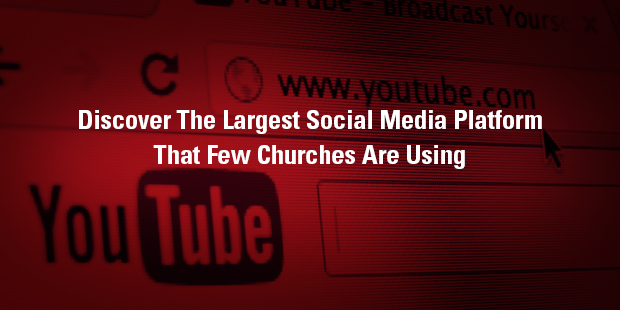
Great Communication Part 3: Get Visual
Are you and your team using more and more words, yet communicating less and less?
Today more than ever, we live in a visual society. Especially in the online world, everyone relies on the power of photos and engagement of video.
While researching a project recently, I was struck by three surprising data points from visual communicator Dan Roam:
- Research from IBM found that 90% of all data collected in history has been generated in the last two years.
- Research from Cisco found that 90% of all data transmitted online today is visual.
- Roam’s experience indicates that 90% of leaders have no idea how to effectively use visuals in their business.
90%-90%-90%. We’re generating more data than ever, that data is overwhelmingly visual, and most of us don’t know how to use images. No matter what business you’re in, the future of your business is visual.
As a church leader, it is incumbent that you get better at using visual images in your communication.
Whether drawing them, looking at them, or talking about them, visual communication adds enormously to your listener’s ability to think, to remember, and to do.
Visual imagery is, in itself, another whole language. Being fluent in that language gives us mind-boggling power to articulate thoughts, communicate those thoughts, and solve problems in ways we otherwise wouldn’t be able to.
Cement your message with visuals evoking emotion
THE QUICK SUMMARY – Visual Hammer, by Laura Ries
The best way into a mind is not with words at all. The best way into a mind is with visuals.
But not any visual. You need a “visual hammer” that hammers a verbal nail. The Marlboro cowboy. Coca-Cola’s contour bottle. Corona’s lime.
The cowboy hammers “masculinity.” The contour bottle hammers “authenticity.” The lime hammers “genuine Mexican beer.”
A trademark is not a visual hammer. Almost every brand has a trademark, but fewer than one out of a hundred brands have a visual hammer. A trademark is a rebus which communicates nothing except the name of the brand.
A visual hammer, on the other hand, communicates the essence of the brand.
Visual Hammer is the first book to document the superiority of the “hammer and nail” approach to branding. Some examples.
- The pink ribbon that made Susan G. Komen for the Cure the largest nonprofit foundation to fight breast cancer.
- The Aflac duck that increased Aflac’s name recognition from 12 percent to 94 percent.
- The green jacket which made the Masters the most-prestigious golf tournament.
- The watchband which made Rolex the largest-selling luxury watch.
- Colonel Sanders who made KFC the world’s largest chicken chain.
Why are marketing plans usually nothing but words when the best way into a mind is with the emotional power of a visual?
After reading Visual Hammer, you might want to tear up your current marketing plan and start fresh.
A SIMPLE SOLUTION
In a typical organization – and that includes churches – there is a whole gang of smart people so overwhelmed by verbal data that they’re hard pressed to know what to pay attention to.
That’s where pictures come in.
The basics of visual thinking have nothing to do with being an artist, or creating impressive designs using the latest computer application. Visual thinking is learning to think with your eyes.
Everyone already has good visual thinking skills, even if they don’t acknowledge it. Visual thinking is a very powerful way to communicate information that will help solve problems. It may appear to be something new, but the fact is, we already know how to do it.
Visual thinking starts with understanding the power of the image.
When you live in a world of word, you tend to see the visual world as secondary to verbal reality. Yet nature is visual, not verbal.
Take a walk in the park. Scuba dive in the ocean. Climb a mountain. This is reality and there are no words in nature. Words are useful devices to communicate the reality of nature.
Photographs, illustrations and drawing are artificial, but they too are a more direct representation of nature than are words.
The Coca-Cola bottle is not just a bottle. It is a visual hammer that nails in the idea that Coke is the original cola, the authentic cola, the real thing. In a Coca-Cola commercial, the visuals speak louder than the words. That’s the work of a visual hammer.
That’s the difference between designing a trademark and designing a visual hammer. Almost every brand has a trademark, but few brands have visual hammers.
A visual hammer doesn’t just repeat your brand name; it hammers a specific word into the mind. For brands that can create and dominate a new category, that word is “leadership.”
When you live in a world of words, you tend to see the visual world as secondary to verbal reality. Yet nature is visual, not verbal.
A visual hammer makes an emotional impact on the right side of the consumer’s brain which motivates the left side of the brain to verbalize the idea and then store it.
Your right brain doesn’t think in the normal sense of what we mean by “thinking.” It reacts emotionally and involuntarily.
To develop a hammer you need a narrow focus you can visualize in a dramatic way.
Don’t fret about narrow concepts not appealing to as many people as broader ones. Better to use a narrow concept to motivate a segment of the market rather than a broad concept that motivates no one,
Laura Ries, Visual Hammer
A NEXT STEP
Explore the power of visual images in solving problems with the following exercise.
Write down a list of at least four questions about a ministry situation or problem you team has recently faced.
Cluster the questions in four groups, giving each set a title.
Bring your team together around a table, and give them a large sheet of paper. Ask you team to create a quadrant by drawing two lines on their paper.
Place magazines, newspapers, precut pictures, fabrics, thread, color pencils, and glue sticks in the sender of the table. Provide plenty of materials in order for all participants to use simultaneously.
Each team member will use the materials on the table to visually answer their question. Designate a time limit for the exercise.
When completed, ask each team member to present and explain their collages. As a group, determine the single best image that represents the best answer for each question.
This exercise demonstrates the power of visual images in answering questions or problems you are encountering.
This is part of a weekly series posting content from one of the most innovative content sources in the church world: SUMS Remix Book Summaries for church leaders.
SUMS Remix takes a practical problem in the church and looks at it with three solutions; and each solution is taken from a different book. As a church leader you get to scan relevant books based on practical tools and solutions to real ministry problems, not just by the cover of the book. Each post will have the edition number which shows the year and what number it is in the overall sequence. (SUMS provides 26 issues per year, delivered every other week to your inbox).

Tags: Laura Ries, Visual Hammer, visual

















 A “more is more” approach is seen in a church in which the basic operating assumption is that the more programs a church can offer in the “church space” the better. The hope is that more programs will attract more people and provide opportunities for spiritual growth.
A “more is more” approach is seen in a church in which the basic operating assumption is that the more programs a church can offer in the “church space” the better. The hope is that more programs will attract more people and provide opportunities for spiritual growth. The “less is more” approach operates with the assumption that the church should provide a few high quality offerings. Whether or not these offerings take place in church space or life space is a variable. In addition, the church attempts to design these offerings so that they have a meaningful relationship to one another. Ideally, the program offerings are designed around a unified set of output (discipleship) results.
The “less is more” approach operates with the assumption that the church should provide a few high quality offerings. Whether or not these offerings take place in church space or life space is a variable. In addition, the church attempts to design these offerings so that they have a meaningful relationship to one another. Ideally, the program offerings are designed around a unified set of output (discipleship) results. TO BE IS MORE
TO BE IS MORE













